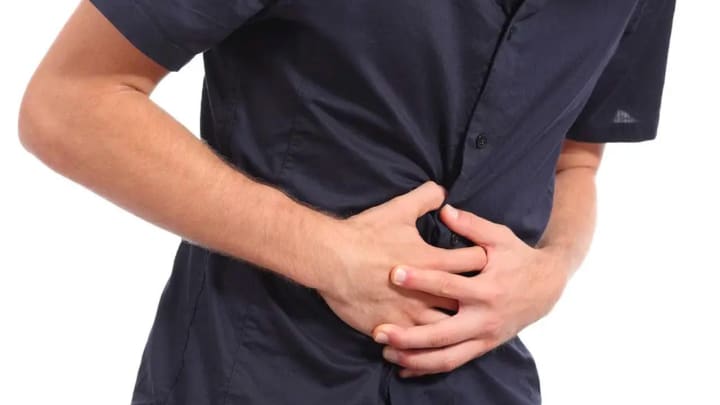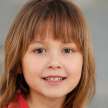Three parts of the body show "warning" when bile duct cancer is coming
How to prevent the occurrence of bile duct cancer?

Mr. Zhang is 30 years old, because the family is not good, every day and night to deliver money, meals often have a meal, stomach pain is also a common thing. Mr. Zhang also did not take it seriously, occasionally eating a piece of stomach medicine on their own regardless.
The family found that Mr. Zhang, who originally had a large meal, now has a very poor appetite, and did not eat a few bites saying that his stomach does not eat. And the face is also waxy, nothing always scratching arms, said the skin prickly itch. A series of abnormal symptoms, so the mother is very worried, the next day took Mr. Zhang to the local hospital for medical treatment.

Originally, the family thought that Mr. Zhang was so young that it should not be a big deal, but after examination, he was diagnosed with bile duct cancer, which was already at an advanced stage. The doctor regrettably told Mr. Zhang's family that they had missed the time for surgery and could only be treated by radiotherapy and chemotherapy. But very, unfortunately, eventually, Mr. Zhang passed away in less than six months.
From the time Mr. Zhang was diagnosed with bile duct cancer to his death, it took less than half a year, and he was still so young, what kind of terrible disease is bile duct cancer? Today's article will take a closer look at some issues with bile duct cancer.
What kind of disease is bile duct cancer?
Before understanding bile duct cancer, let's get familiar with bile ducts. Compared with other organs of the human body, bile ducts may be relatively unfamiliar to you, they are not just ducts, they are composed of intrahepatic and extrahepatic bile ducts.
The intrahepatic bile duct is the competent bile transport channel in the liver, which contains many small bile ducts that intersect to form a thicker bile duct and divide into the left and right hepatic ducts at the hepatic portal to drain the bile produced by the liver cells.
The extrahepatic bile ducts include the common bile duct, the common hepatic duct, and the cystic duct. The gallbladder is responsible for the storage and concentration of bile, and the common hepatic duct, which is formed when the gallbladder duct and the left and right hepatic ducts meet after exiting the liver, come together to form the common bile duct and open to the duodenum through the duodenal jugular.
After knowing the bile duct, it becomes easier to understand bile duct cancer malignantnant tumor occurring in the bile duct is bile duct cancer, which can be subdivided into intrahepatic bile duct cancer and extrahepatic bile duct cancer according to the tumor growth site. Extrahepatic cholangiocarcinoma can be subdivided into cholangiocarcinoma of the hilar region, cholangiocarcinoma of the middle segment, and cholangiocarcinoma of the lower segment.
In addition, according to the extent of cancer cell spread, cholangiocarcinoma can be divided into two periods: early and late. In these two stages, patients with early-stage cholangiocarcinoma can be cured by surgical resection, while patients with late-stage cholangiocarcinoma can only prolong their lives as much as possible through radiotherapy, chemotherapy, targeted drugs, or stem cell transplantation if surgical resection is difficult or even inoperable.
Since cholangiocarcinoma can be treated at an early stage, we should pay more attention to whether there are any abnormalities in our body in our daily life, so that even if we are unfortunate to have the disease, we can diagnose it as early as possible and get effective treatment as soon as possible. Especially when abnormalities occur in three parts of the body, we need to be alert.
Three parts of the body will show a "warning" when bile duct cancer is coming
Because the gallbladder is located after the liver and in the abdominal cavity, once the gallbladder or bile ducts are diseased, the liver and other related organs of the digestive system will probably be affected to a certain extent. Therefore, in the process of bile duct cancer, these tissues and organs will send us some kind of "signal" in advance.
1. Skin becomes waxy yellow, i.e. jaundice
Almost all bile duct cancer patients have jaundice in the late stage because the bile from the liver has to be transported to the gallbladder through the bile duct, but when there is a tumor in the bile duct, the bile will be blocked when it flows into the gallbladder from the liver, and when there is bile continuously, it will cause the bile pressure to increase and finally break the capillaries and make the bile flow into the blood.
When the bilirubin level in our blood reaches 34.2umoL/L or more, it will cause yellow staining of the skin and sclera, and the skin will also be itchy.
At the same time, most patients have symptoms such as yellow urine and clay-colored stools. Although insufficient water intake can also cause yellow urine, patients with bile duct cancer have darker urine that resembles strong tea. Therefore, we must be alert when jaundice is detected and should immediately go to the hospital for the relevant examination.
2、Indigestion and other gastrointestinal diseases
The normal digestion of fat in the human body is as follows: fat flows into the small intestine, after which bile in the bile duct also enters the small intestine and then starts to emulsify and decompose fat. However, because the bile ducts are blocked, the bile from the liver cannot be discharged properly, which affects the digestion and absorption of lipid substances, and then fat indigestion occurs.
Long-term fat indigestion, the gastrointestinal tract digestive function will be affected, easy to produce post-meal bloating, nausea, vomiting, and other discomfort.
Moreover, fat is one of the three major sources of energy in the human body, supplying the energy needed by the body every day. When fat indigestion is poor, malnutrition and its related nutritional complications are likely to occur, so patients with bile duct cancer show symptoms such as indigestion and wasting weakness.

3、Continuous pain in the right upper abdomen
Patients with gallbladder cancer and some patients with intrahepatic cholangiocarcinoma may experience pain in the upper abdomen, which worsens over time and even radiates to the right shoulder and lower back, especially when the condition of cholangiocarcinoma patients deteriorates, the pain becomes more and more obvious, and they often cannot sleep at night due to pain without drug intervention.
Especially after eating fatty food, because the liver secretes more bile to digest fat, but the pathway of bile into the small intestine is affected by cholangiocarcinoma and constantly irritates the lesion, thus making the patient's painful situation more obvious.
Besides persistent pain in the right upper abdomen, cholangiocarcinoma located in the neck of the gallbladder can lead to symptoms such as acute cholecystitis and gallbladder enlargement. When the disease continues to progress, a high and low, hard mass will appear in the right upper abdomen, which will be found by hand touch.
The above three symptoms are the more significant manifestations of bile duct cancer, but when patients have symptoms suspected to be bile duct cancer, such as jaundice and gastrointestinal disease, a more precise examination is needed to determine whether they are suffering from bile duct cancer.
Blood tests are necessary, including a full range of liver function tests to determine whether there is an increase in bilirubin and whether the intracellular components of the blood are normal. To obtain more accurate results, some auxiliary examinations such as ultrasound examination and CT examination will also be performed, which can more accurately determine the location, size of obstruction, and number of tumors occurring in bile duct cancer.
Although early bile duct cancer has the possibility of cure, according to clinical data, most patients are already in an advanced stage of bile duct cancer at the time of examination. Therefore, early detection can lead to early treatment. However, it is more meaningful to know "how to prevent cholangiocarcinoma?" than to actively receive treatment. is more meaningful.
How to prevent bile duct cancer?
For the record, as of now, it is not possible to prevent bile duct cancer through medication, and no medication can prevent bile duct cancer.
To prevent the occurrence of bile duct cancer, first of all, we should have regular medical checkups to detect any problems in time for timely treatment, especially for those who have biliary diseases. For example, if you have gallstones, you have to deal with them as early as possible. Long-term gallstones without treatment lead to repeated infections, which is the most common cause of bile duct cancer, so you have to pay attention to it and solve it actively.
Congenital bile duct abnormalities such as bile duct confluence abnormalities, common bile duct cysts, and other congenital disorders of bile duct function can prevent the liver from producing bile into the gallbladder, which is also a relevant factor to trigger bile duct cancer.
Secondly, good eating habits should be cultivated. An irregular diet is one of the triggering factors of bile duct cancer. Overeating can easily affect the reflux and destination of bile; high oil and high fat can easily increase the burden on organs and cause excessive bile secretion, which can increase the incidence of gallstones and thus increase the incidence of bile duct cancer.
It is also important to pay attention to food hygiene, and it is best to consume them after they are cooked. Immature food, such as freshwater fish and shrimp, can easily produce Schistosoma Chinensis (commonly known as liver fluke), which can cause loss of appetite, abdominal pain, and diarrhea in the early stage of infection, and can cause cirrhosis, hepatitis, and hepatotuberculosis in serious cases, and further induce the occurrence of bile duct cancer.
If bile duct cancer has already occurred, such patients will suffer from digestive and absorption disorders or loss of appetite due to bile duct damage, resulting in insufficient nutrient intake. Therefore, it is necessary to increase the protein intake in daily diet, and pay attention to selecting foods with less digestible fat, such as egg custard and lean meat, to minimize the burden on the liver.
Finally

When symptoms of suspected bile duct cancer appear, you must seek medical examination and treatment in time.
In our daily life, we should do a good job of prevention and adhere to regular medical checkups. When our body sends us an "alarm", we should not ignore it, so that the disease can be treated in time at the early stage by early detection and early treatment.






Comments
There are no comments for this story
Be the first to respond and start the conversation.